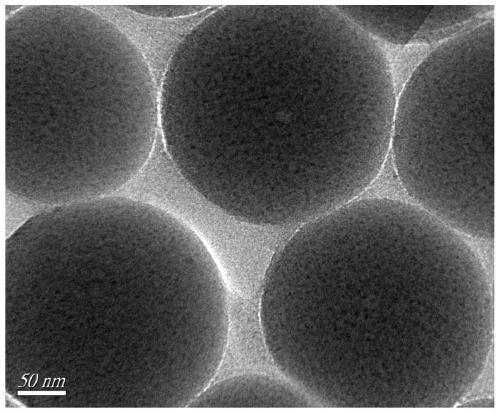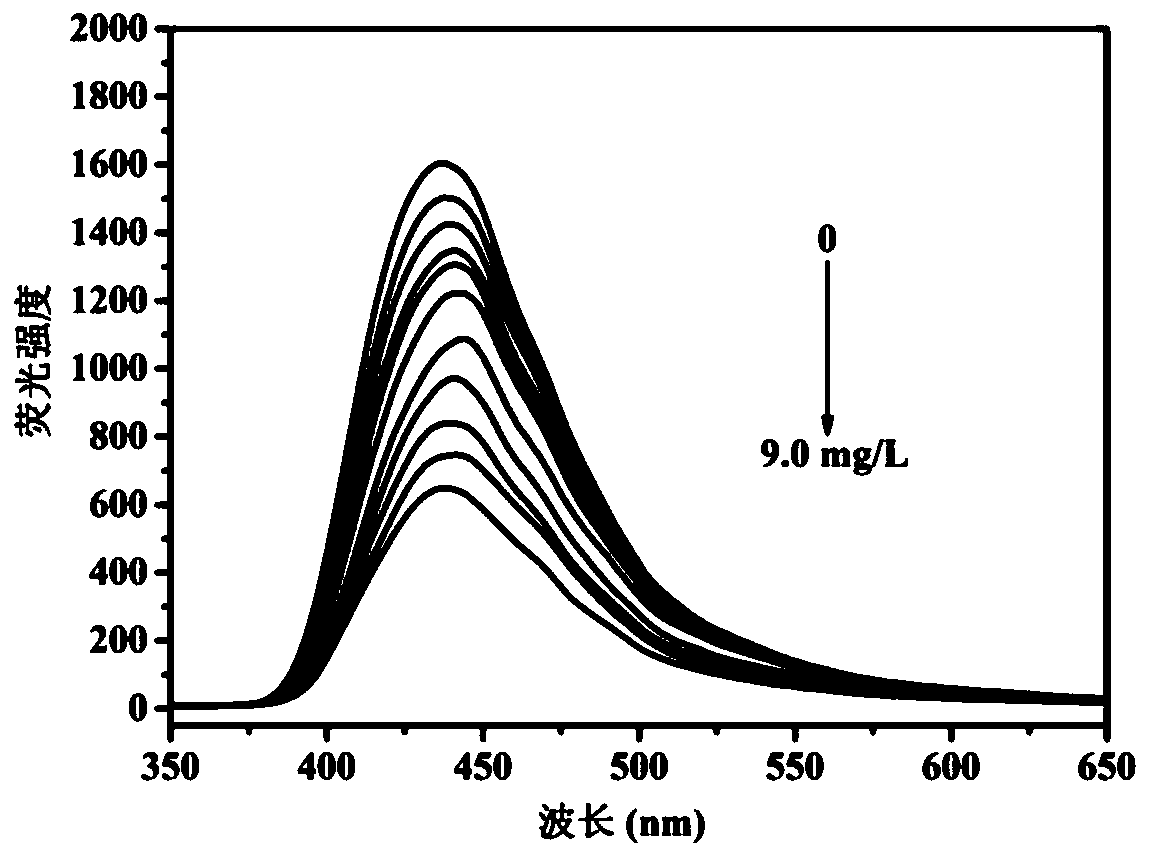Preparation method and application of molecularly imprinted fluorescent sensor based on N-CQDs
A fluorescence sensor, molecular imprinting technology, applied in chemical instruments and methods, fluorescence/phosphorescence, nanotechnology for materials and surface science, etc. , the effect of reducing the use of expensive instruments
- Summary
- Abstract
- Description
- Claims
- Application Information
AI Technical Summary
Problems solved by technology
Method used
Image
Examples
Embodiment 1
[0031] (1) Preparation of highly fluorescent nitrogen-doped carbon quantum dots
[0032] Dissolve 0.5g of citric acid and 0.5g of urea in 10mL of deionized water. After stirring until a homogeneous and transparent solution is obtained, transfer it to a stainless steel polytetrafluoroethylene-lined reaction kettle; react in an oven at 140°C for 4.0h; wait for natural cooling After reaching room temperature, the resulting dark green solution was precipitated three times with acetone and centrifuged to obtain the precipitate, which was highly fluorescent nitrogen-doped carbon quantum dots, which were recorded as N-CQDs; finally, the prepared N-CQDs were dried and ground to obtain Powder; add water and mix to obtain nitrogen-doped carbon quantum dot solution;
[0033] (2) Preparation of molecularly imprinted fluorescent sensors based on N-CQDs
[0034] Add 7.5mL cyclohexane, 1.8mL n-hexanol and 1.77mL Triton X-100 into a 25mL flask, stir magnetically at 1000rpm / min at room temper...
Embodiment 2
[0036] (1) Preparation of highly fluorescent nitrogen-doped carbon quantum dots
[0037] Dissolve 0.5g of citric acid and 0.5g of urea in 10mL of deionized water. After stirring until a homogeneous and transparent solution is obtained, transfer it to a stainless steel polytetrafluoroethylene-lined reaction kettle; react in an oven at 160°C for 4.0h; wait for natural cooling After reaching room temperature, the resulting dark green solution was precipitated three times with acetone and centrifuged to obtain the precipitate, which was highly fluorescent nitrogen-doped carbon quantum dots, which were recorded as N-CQDs; finally, the prepared N-CQDs were dried and ground to obtain Powder; add water and mix to obtain nitrogen-doped carbon quantum dot solution;
[0038] (2) Preparation of molecularly imprinted fluorescent sensors based on N-CQDs
[0039] Add 7.5mL cyclohexane, 1.8mL n-hexanol and 1.77mL Triton X-100 into a 25mL flask, stir magnetically at 800rpm / min at room temperatu...
Embodiment 3
[0041] (1) Preparation of highly fluorescent nitrogen-doped carbon quantum dots
[0042] Dissolve 0.5g of citric acid and 0.5g of urea in 10mL of deionized water. After stirring until a homogeneous and transparent solution, transfer to a stainless steel Teflon-lined reactor; react in an oven at 200°C for 4.0h. After naturally cooling to room temperature, the resulting dark green solution was precipitated with acetone three times, and centrifuged to obtain the precipitate, which was highly fluorescent nitrogen-doped carbon quantum dots, which were recorded as N-CQDs; finally, the prepared N-CQDs were dried, The powder is obtained after grinding; it is added to water and mixed to obtain a nitrogen-doped carbon quantum dot solution;
[0043] (2) Preparation of molecularly imprinted fluorescent sensors based on N-CQDs
[0044] Add 7.5mL cyclohexane, 1.8mL n-hexanol and 1.77mL Triton X-100 into a 25mL flask, stir magnetically at 600rpm / min at room temperature for 20min, then add 1...
PUM
| Property | Measurement | Unit |
|---|---|---|
| concentration | aaaaa | aaaaa |
Abstract
Description
Claims
Application Information
 Login to View More
Login to View More - R&D
- Intellectual Property
- Life Sciences
- Materials
- Tech Scout
- Unparalleled Data Quality
- Higher Quality Content
- 60% Fewer Hallucinations
Browse by: Latest US Patents, China's latest patents, Technical Efficacy Thesaurus, Application Domain, Technology Topic, Popular Technical Reports.
© 2025 PatSnap. All rights reserved.Legal|Privacy policy|Modern Slavery Act Transparency Statement|Sitemap|About US| Contact US: help@patsnap.com



